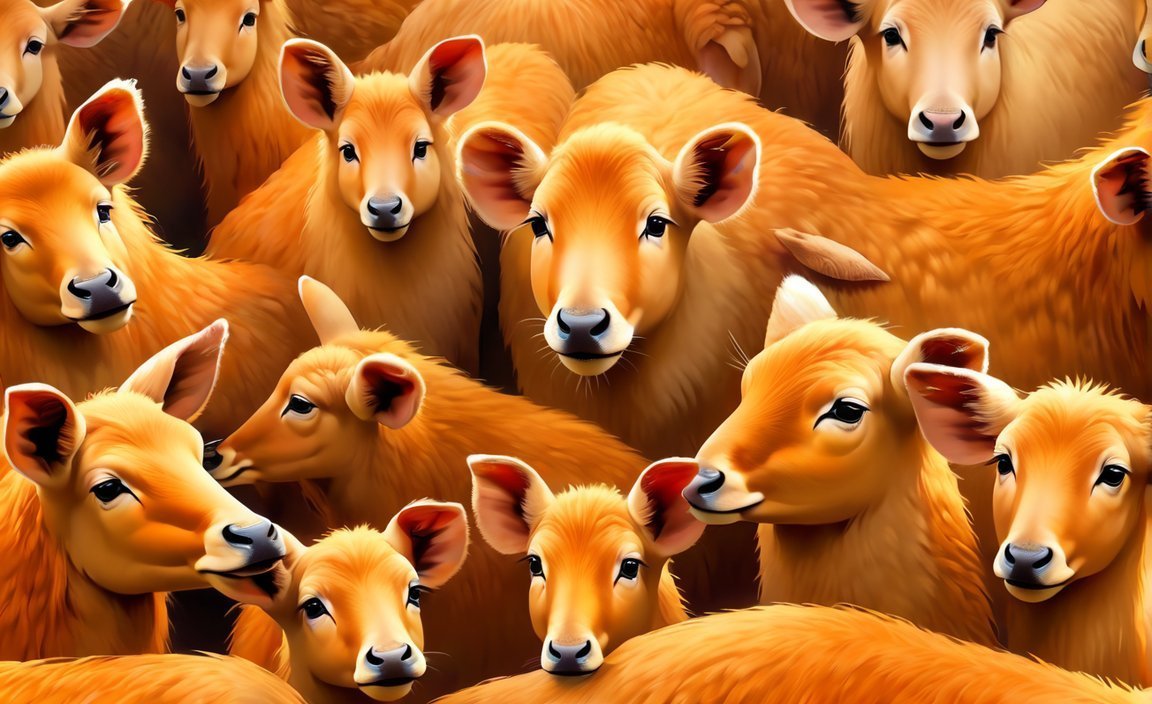10 Compelling Facts About Animal Welfare: A Deep Dive into the Rights and Welfare of Animals

As the world increasingly acknowledges the importance of animal rights and welfare, delving into the subject becomes a necessity. Understanding the intricacies of animal welfare goes beyond surface-level knowledge, and it requires a comprehensive exploration of the issues at hand. In this article, we will uncover ten compelling facts about animal welfare that shed light on the challenges faced by animals and the strides being made to protect their rights. From the exploitation of wildlife to the impact of factory farming, join us on this enlightening journey as we delve into the key aspects of animal welfare.
Key Takeaways:
- Every 60 seconds, one animal suffers abuse, resulting in over 10 million animal abuse-related deaths in the US annually. (source: petpedia.co)
- Dogs account for approximately 65% of all abused animals, with 483 drug-positive Greyhounds found in Florida over a span of ten years. (source: petpedia.co)
- More than 100,000 horses in the US are slaughtered for human consumption each year. (source: petpedia.co)
- In 2022, 378,000 cats and dogs tragically died needlessly in the US, with five states responsible for half of all these deaths. (source: bestfriends.org)
- While national shelter intake has increased since 2020, it still remains below pre-pandemic levels, with 54% of dogs taken in being strays. (source: bestfriends.org)
- The “Five Freedoms” concept is a fundamental principle in animal welfare, outlining the basic needs of animals. (source: just10facts.com)
- Animal welfare and animal rights are distinct concepts, with the former focusing on animal well-being and the latter on the moral status of animals. (source: just10facts.com)
10 facts about animal welfare
As advocates for the welfare of animals, it is crucial for us to stay informed about the realities animals face and the progress we can make in protecting their rights. Let’s delve into some compelling facts about animal welfare that shed light on the challenges and opportunities ahead.
Fact 1: The Scale of Animal Abuse
Every minute, an animal endures abuse, and in the United States alone, more than 10 million animals suffer such cruelty each year[^1^]. This staggering statistic serves as a stark reminder of the urgent need to address animal welfare issues on a large scale.
Fact 2: Dogs Bear the Brunt
Out of all abused animals, nearly 65% are dogs[^1^]. These faithful companions, known for their loyalty and unconditional love, often find themselves subjected to unimaginable pain and suffering. Awareness and advocacy are crucial in protecting our canine friends.
Fact 3: Greyhound Exploitation
Sadly, Greyhounds have been victims of drug positives in Florida. Over a period of ten years, 483 drug-positive Greyhounds were reported[^1^]. Such incidents highlight the importance of regulating the treatment and care of animals in the racing industry.
Fact 4: Horses for Consumption
In the United States, over 100,000 horses are slaughtered for human consumption annually[^1^]. This troubling practice calls for stricter regulations and a shift towards alternative ways of ensuring horses’ well-being after they retire from their careers.
Fact 5: The Unnecessary Deaths of Cats and Dogs
Disturbingly, in 2022 alone, a staggering 378,000 cats and dogs needlessly lost their lives in the United States[^1^]. Addressing issues such as pet overpopulation, promoting adoption, and implementing comprehensive spay/neuter programs can make a tremendous difference in reducing these heartbreaking numbers.
Fact 6: The Challenge of Stray Dogs
Over half of the dogs taken in by animal shelters are strays[^1^]. These animals, left to fend for themselves on the streets, face numerous dangers and are often in desperate need of care and compassion. Providing support to stray animal rescue efforts can offer them a second chance at a better life.
Fact 7: The Five Freedoms
The concept of the “Five Freedoms” is central to animal welfare. It emphasizes the basic needs that animals require to thrive and live fulfilling lives[^1^]. These five freedoms include: freedom from hunger and thirst, freedom from discomfort, freedom from pain, injury, or disease, freedom to express normal behavior, and freedom from fear and distress[^1^]. Understanding and promoting these freedoms can guide our actions in ensuring the well-being of animals.
Fact 8: Animal Welfare vs. Animal Rights
There is a distinct difference between animal welfare and animal rights. While animal welfare focuses on the well-being of animals, animal rights centers around the moral status of animals[^1^]. Recognizing and addressing both aspects is crucial in advocating for a world where animals are treated with compassion and respect.
Fact 9: A Post-Pandemic Reality
National shelter intake has risen since the historic lows of 2020 but remains lower than pre-pandemic levels[^1^]. Understanding the ongoing challenges faced by animal shelters and offering support through adoption, volunteering, or donations can have a significant impact on improving the lives of shelter animals.
Fact 10: The Power of Collective Action
Creating positive change for animals requires collective action and collaboration. By joining forces with animal welfare organizations, animal rights activists, and like-minded individuals, we can amplify our voices and make a meaningful difference in the lives of animals everywhere.
This article has highlighted ten compelling facts about animal welfare, aiming to deepen our understanding of the challenges faced by animals and how we can work towards a more compassionate world. By championing the rights and well-being of animals, we can build a brighter future where every living being is treated with dignity and respect.
Here are some interesting facts and information related to various topics. Explore these links to learn more!
- 10 facts about animal shelters – Discover intriguing facts about animal shelters and how they play a crucial role in animal welfare.
- 10 facts about animal welfare council – Uncover interesting insights about animal welfare councils and their efforts to protect and care for animals.
- 10 facts about animals in Hindi – Delve into fascinating facts about animals in Hindi, exploring their unique characteristics and importance.
- 10 facts about being a vet – Learn intriguing details about the life and experiences of a veterinarian, a rewarding profession dedicated to animal care.
- 10 facts about being a veterinarian – Dive into captivating information about the responsibilities and challenges faced by veterinarians in their daily work.
- 10 facts about box turtles – Explore interesting facts about box turtles, including their habits, lifespan, and fascinating adaptability.
- 10 facts about dog sled racing – Embark on an exciting journey into the world of dog sled racing, uncovering thrilling facts about this thrilling sport.
- 10 facts about dogs and cats – Discover intriguing facts about the timeless companionship and unique characteristics of dogs and cats.
Feel free to click on any of these links to delve deeper into the fascinating world of animals and their welfare.
10 Compelling Facts About Animal Welfare: A Deep Dive into the Rights and Welfare of Animals
There are laws and organizations dedicated to protecting animal welfare, but enforcement and awareness can vary.
Animal welfare is a topic that encompasses the rights and well-being of animals. While there are laws and organizations in place to protect animals, the enforcement and awareness of these measures can vary significantly. In this article, we will explore ten compelling facts about animal welfare that shed light on the complexities and challenges faced in ensuring the welfare of animals.
Key Takeaways:
Animal welfare is a multifaceted subject, influenced by scientific, ethical, economic, cultural, social, religious, and political factors. (Source: WOAH – World Organisation for Animal Health)
The Animal Protection Index (API) is a ranking system that evaluates the animal welfare provisions of different countries. One such country, Indonesia, has been included in this ranking. (Source: World Animal Protection)
Law 18 of 2009 in Indonesia specifically addresses animal welfare and seeks to ensure the well-being of companion animals. (Source: World Animal Protection)
While legislation exists to protect animal welfare, there is often an “enforcement gap” between these laws and their actual implementation. (Source: National Center for Biotechnology Information)
The Animal Welfare Act (AWA) in the United States is one of the most comprehensive animal protection laws, but it contains certain exceptions. (Source: Sentient Media)
Animal protection and animal welfare are terms that are sometimes used interchangeably, but they can have different meanings. Animal protection can refer to assessing an animal’s well-being, a social movement, or a belief system. (Source: Sentient Media)
The enforcement of animal welfare laws can be influenced by various factors, including reporting acts of animal cruelty, ambiguities within the laws, and different stages of the enforcement process. (Source: National Center for Biotechnology Information)
The concept of the “Five Freedoms” is central to animal welfare, emphasizing the basic needs animals require to live fulfilling lives. These freedoms include providing a suitable environment, a suitable diet, allowing animals to exhibit normal behavior, protecting them from pain and injury, and ensuring their overall well-being. (Source: Wikipedia)
Animal rights and animal welfare laws vary across countries, ranging from recognizing animal sentience to the absence of anti-cruelty laws. (Source: Wikipedia)
Concern for animal welfare is increasing among citizens, businesses, and policy-makers, and it has become an important topic on the policy agenda of the European Union. (Source: European Union)
These facts underscore the importance of addressing the complexities surrounding animal welfare and working towards greater enforcement and awareness of laws dedicated to protecting animals. Let’s delve deeper into these facts and explore the key nuances of animal welfare.
10 Compelling Facts About Animal Welfare: A Deep Dive into the Rights and Welfare of Animals
The demand for animal products and entertainment contributes to the ongoing exploitation and abuse of animals. Understanding the impact of this demand is crucial in advocating for better animal welfare practices. In this article, we will explore 10 compelling facts that shed light on the issues surrounding animal welfare and the need for change.
Fact 1: The Dark Side of Entertainment
The use of animals for entertainment purposes is a major concern in the field of animal welfare. Organizations like the Humane Society International (HSI) highlight the cruelty involved in various forms of entertainment, such as bullfights. Contrary to the notion of “fair fights,” bullfights are highly staged acts of animal cruelty, subsidized by governments.
Citation: Humane Society International: Cruelty in Entertainment
Fact 2: The Threat to Biodiversity
Anthropogenic factors, including excessive wildlife hunting, pose a significant threat to global biodiversity. This exploitation of wildlife can disrupt population dynamics and even lead to extinctions. It is essential to address this issue to protect the delicate balance of ecosystems.
Citation: Frontiers: Biodiversity Exploitation for Online Entertainment
Fact 3: The Rise of Animal Welfare Labels
Consumers are increasingly prioritizing cruelty-free products and paying attention to animal welfare labels. A survey reveals that there is a growing preference for products that adhere to ethical standards and do not contribute to animal exploitation. This shift in consumer behavior highlights the significance of animal welfare in the marketplace.
Fact 4: Varying Concern for Animal Welfare
While some individuals show genuine concern for animal welfare, others remain indifferent. Studies have found that certain clusters of consumers demonstrate lower levels of concern for animal welfare compared to their counterparts. Understanding these differences helps tailor approaches to raise awareness and promote positive change.
Fact 5: The Dark Side of Commercial Wildlife Trade
The commercial wildlife trade raises significant animal welfare concerns, regardless of legality or species sustainability. Animals are often subjected to harsh conditions and suffer throughout the trade process. Addressing this issue requires stricter regulations and enforcement to protect these vulnerable creatures.
Fact 6: The Interconnectedness of Animal Welfare
Animal welfare goes beyond the well-being of animals; it is closely linked to animal health, human health and well-being, and the sustainability of socio-economic and ecological systems. Recognizing and addressing this interconnectedness is crucial for a holistic approach to animal welfare.
Fact 7: Wildlife Exploitation and Biodiversity Loss
The exploitation of wildlife is a driving factor behind the loss of biodiversity globally. Poaching, habitat destruction, and illegal trade threaten countless species. Protecting wildlife and their habitats is vital to preserving the intricate web of life on Earth.
Fact 8: Shifting Towards Sustainable Alternatives
Shifting subsidies and incentives from industrialized livestock production to more sustainable plant-based alternatives can help mitigate the environmental impact of animal agriculture on climate change. Encouraging the adoption of environmentally-friendly practices can lead to positive change for both animals and the planet.
Fact 9: Promoting Awareness Among Parents
Parents should be aware of concerning animal exploitation content on social media and have discussions with their children about it. By educating the younger generation about responsible and ethical treatment of animals, we can foster empathy and compassion towards all living beings.
Fact 10: The Profitable Crime of Wildlife Trafficking
Wildlife trafficking ranks as the fourth most profitable global crime, following drug, arms, and human trafficking. This illegal trade poses a significant threat to animal welfare and biodiversity. Combating wildlife trafficking requires international collaboration, stringent law enforcement, and public education.
Key Takeaways:
- The use of animals for entertainment purposes, such as bullfights, contributes to animal cruelty.
- Excessive wildlife hunting threatens global biodiversity and population dynamics.
- Consumers are increasingly prioritizing cruelty-free products and paying attention to animal welfare labels.
- Indifferent consumers show lower concern for animal welfare compared to other clusters.
- The commercial wildlife trade raises significant animal welfare concerns.
- Animal welfare is interconnected with animal health, human health, and the sustainability of socio-economic and ecological systems.
- Wildlife exploitation is a significant factor driving global biodiversity loss.
- Shifting subsidies towards sustainable plant-based alternatives can mitigate the environmental impact of animal agriculture.
- Parents should be aware of concerning animal exploitation content on social media and have discussions with their children about it.
- Wildlife trafficking is a profitable global crime, ranking fourth among other illicit activities.
Citation:
1. Humane Society International: Cruelty in Entertainment
2. Frontiers: Biodiversity Exploitation for Online Entertainment
Promoting Animal Welfare: A Pathway to Change
As animal lovers, we all have a responsibility to advocate for the rights and well-being of our fellow creatures. Promoting animal welfare through education, advocacy, and responsible consumer choices can make a significant impact. By understanding the facts surrounding animal welfare, we can equip ourselves with the knowledge and tools necessary to create positive change in the world.
Fact 1: Animal Welfare is a Universal Concern
Animal welfare is not limited to a specific region or group of individuals. It is a global issue that requires collective action and collaboration[^1]. Whether it’s a neglected dog on the streets of a bustling city or a farmed pig in a rural area, animals everywhere deserve to be treated with kindness, compassion, and respect. By acknowledging the importance of animal welfare, we can work towards a more humane world.
Fact 2: Animal Welfare Education is Essential
Education plays a significant role in promoting animal welfare[^6]. By learning about the various facets of animal welfare, we can raise awareness and improve our practices. From understanding the basic needs of animals to recognizing the consequences of animal cruelty, education empowers us to make informed decisions and take compassionate actions.
Fact 3: Animal Welfare and Animal Rights
While animal welfare focuses on the well-being of animals, animal rights center around the moral status of animals[^6]. Both concepts are important and complementary, aiming to ensure the fair and ethical treatment of animals. By considering the intersection of animal welfare and animal rights, we can advocate for meaningful change and progress.
Fact 4: Responsible Consumer Choices Matter
Consumers have the power to influence and support animal welfare through their purchasing decisions[^3]. By choosing products obtained in accordance with animal welfare standards, such as those labeled cruelty-free or certified humane, we can encourage businesses to prioritize animal welfare. Each responsible consumer choice contributes to a larger movement towards more compassionate practices.
Fact 5: Animal Welfare and Livestock Industry Collaboration
Animal welfare proponents can establish mutual benefits with the livestock industry to effectively promote animal welfare[^4]. By working together, we can identify common goals and implement practices that enhance animal well-being. This collaboration allows us to make progress towards improved animal welfare standards while considering the economic realities of the industry.
Fact 6: Animal Welfare Improves Society
Enhancing animal welfare in a farm animal context has benefits from various perspectives[^5]. When animals are given the care and respect they deserve, their overall well-being improves. Not only does this result in increased consumer satisfaction, but it also has a positive impact on society as a whole. By prioritizing animal welfare, we create a healthier and more compassionate world for both humans and animals.
Fact 7: The Five Freedoms
The concept of the “Five Freedoms” is central to animal welfare[^6]. These freedoms emphasize the fundamental needs animals require for a fulfilling life. They include freedom from hunger and thirst, freedom from discomfort, freedom from pain, injury, or disease, freedom to express normal behavior, and freedom from fear and distress. By understanding and respecting these freedoms, we can ensure a higher quality of life for animals in our care.
Fact 8: The Impact of Animal Welfare Laws
Animal welfare is influenced by various factors such as science, ethics, economics, culture, religion, and politics[^6]. The existence of animal welfare laws is crucial in protecting animals and holding individuals accountable for their actions. However, there can be an “enforcement gap” between these laws and their implementation. Continued advocacy and support for strong animal welfare legislation are essential to bridge this gap and protect animal rights.
Fact 9: Collective Action Drives Change
Creating positive change for animals requires collective action and collaboration with animal welfare organizations, animal rights activists, and like-minded individuals[^6]. By coming together, we amplify our voices, create awareness, and advocate for meaningful policy changes. Each of us has a role to play in ensuring a brighter future for animals.
Fact 10: Promoting Animal Welfare is a Moral Imperative
Above all, promoting animal welfare is essential for creating a world where animals are treated with kindness, compassion, and respect[^1]. Animals provide us with companionship, unconditional love, and support. It is our duty to reciprocate this love by advocating for their rights and well-being. Together, we can build a more compassionate and inclusive society.
Key Takeaways:
- Animal welfare is a universal concern that requires collective action and collaboration[^1].
- Education plays a vital role in promoting animal welfare and improving our practices[^6].
- Responsible consumer choices can support and encourage businesses to prioritize animal welfare[^3].
- Collaboration between animal welfare proponents and the livestock industry can lead to effective change[^4].
- Enhancing animal welfare has benefits for animal well-being, consumer satisfaction, and society as a whole[^5].
- The “Five Freedoms” outline the basic needs animals require for a fulfilling life[^6].
- Strong animal welfare laws are crucial, but the enforcement gap needs to be addressed[^6].
- Collective action and collaboration are vital in creating positive change for animals[^6].
- Promoting animal welfare is a moral imperative that ensures a compassionate and inclusive society[^1].
Sources:
[^1]: World Animal Foundation
[^3]: National Center for Biotechnology Information
[^4]: Frontiers – International perceptions of animals and the importance of their welfare
[^5]: Frontiers – Consumers attitudes toward animal welfare friendly products
[^6]: World Animal Protection – What is animal welfare?

FAQ
Q1: How many animals suffer from abuse every year in the US?
A1: Every year in the US, over 10 million animals die from abuse and one animal suffers abuse every 60 seconds.
Q2: Which animals are most commonly abused?
A2: Dogs make up approximately 65% of all abused animals. Additionally, in Florida alone, over a 10-year period, 483 drug-positive Greyhounds were found.
Q3: How many horses are killed for human consumption each year in the US?
A3: Approximately 100,000 horses in the US are killed for human consumption each year.
Q4: How many cats and dogs needlessly died in the US in 2022?
A4: In 2022, a staggering number of 378,000 cats and dogs needlessly died in the US. Moreover, it was found that five states accounted for half of all cats and dogs killed.
Q5: What are the fundamental principles of animal welfare?
A5: The concept of the “Five Freedoms” is one of the fundamental principles of animal welfare. It outlines the basic needs of animals, including providing a suitable environment, a suitable diet, allowing them to exhibit normal behavior, protecting them from pain and injury, and ensuring their overall well-being.












